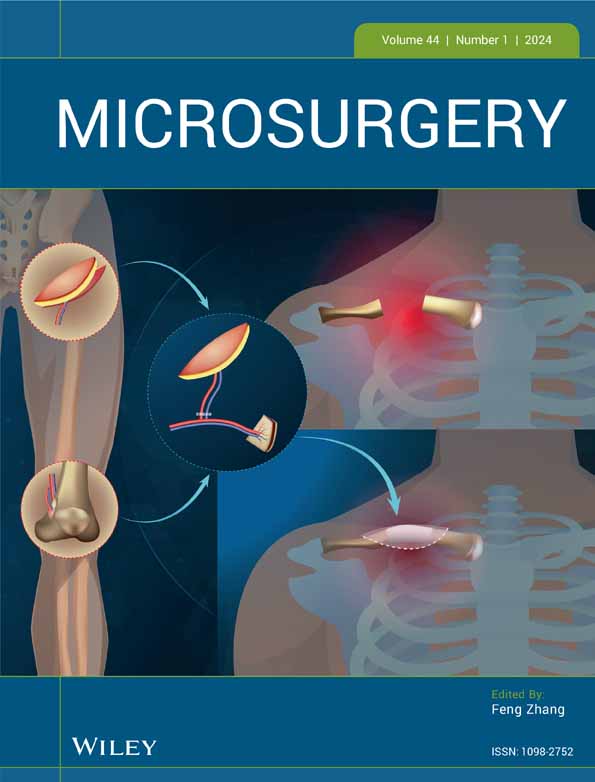Combined use of lower medial thigh perforator (LMTP) flap and pedicled medial sural artery perforator flap (MSAP) for lateral knee defects coverage after sarcoma resection: A case report and literature review of soft tissue defect around knee reconstruction
Abstract
Reconstruction of knee defects still represents a challenge for reconstructive surgeons. After an extensive resection, the primary aim is to reach a stable result, while maintaining a good range of motion and aesthetic unity. The use of pedicled perforator-based flaps makes it possible to achieve these goals. Many are the flaps that can be used in this region, and the pedicle medial sural artery perforator (mSAP) flap is considered among one of the first-choice techniques. The purpose of this case report is to describe for the first time the use of pedicled mSAP flap to cover a lateral knee defect. A 79-year-old patient underwent extensive excision of sarcoma on the lateral side of the left knee, with removal of distal portion of the vastus lateralis muscle and portion of the biceps femoris tendon. The resulting defect from the excision measured 10 cm × 10 cm. To cover the postero-inferior part of the defect we decided to use a mSAP flap, with a skin paddle 10 cm × 5 cm, which was tunneled posteriorly to the popliteal artery and vein in order to reach the affected site. We then used a lower medial thigh perforator (pLMT) flap with a 15 cm × 5 cm skin paddle, rotated by 90° in a propeller fashion to cover the antero-superior portion of the defect. The decision to use two flaps was justified by the fact we wanted to close the donor areas with direct suturing for a better aesthetic result. The post-operative course was regular with only a small wound dehiscence that had healed by secondary intention. At 6 months postoperatively, the patient showed a complete active range of motion of the knee joint and absolute aesthetic satisfaction with flaps donor site and knee shape. A review of literature is also provided, with a specific focus on the different procedures for soft tissue defects reconstruction around the knee. According to our experience, the pedicle of the MSAP flap may be safely used as an additional reconstructive option for lateral knee defects.
CONFLICT OF INTEREST STATEMENT
The authors have no financial conflicts nor commercial associations to disclose.
Mario F. Scaglioni is an Editorial Board member of Microsurgery and a co-author of this article. To minimize bias, they were excluded from all editorial decision-making related to the acceptance of this article for publication.
Open Research
DATA AVAILABILITY STATEMENT
The data that support the findings of this study are available from the corresponding author upon reasonable request.




